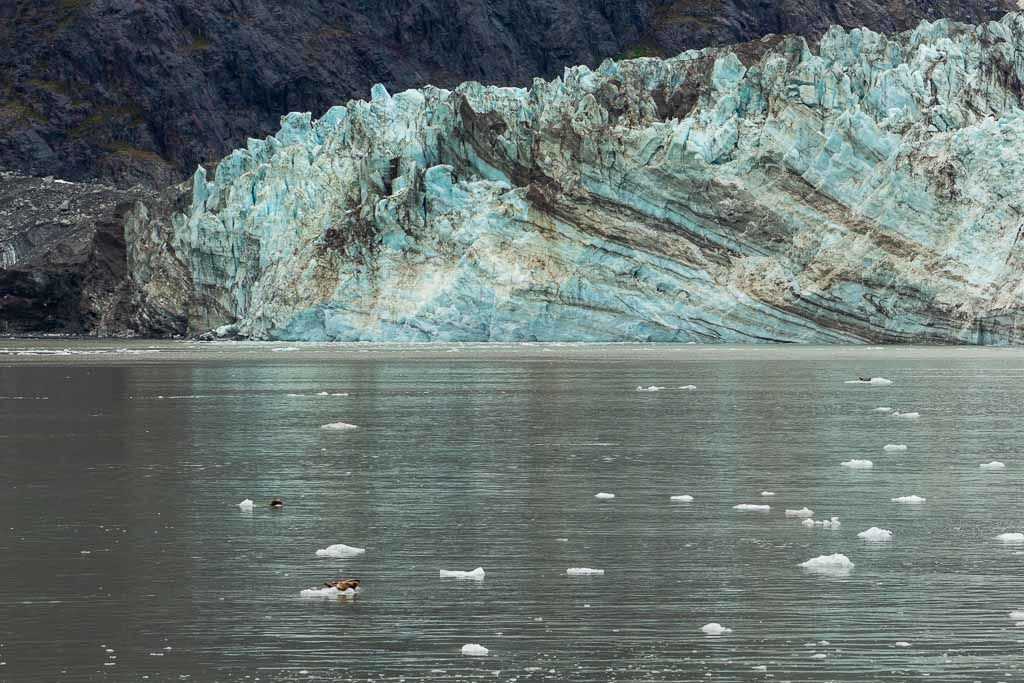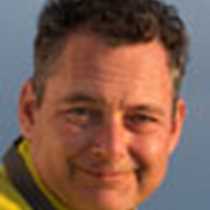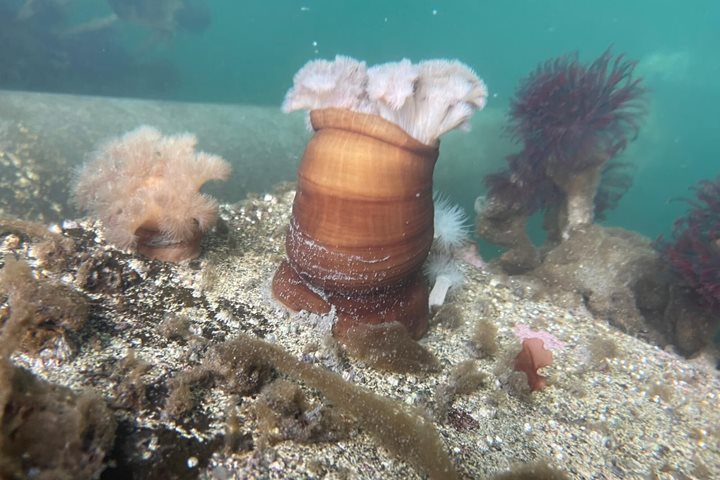Our journey today started with a cruise through the south end of Glacier Bay. We were treated to another epic showing of nature’s raw power and beauty as we witnessed transient killer whales hunting and killing a pinniped (most likely a harbor seal). Often called the wolves of the sea, killer whales hunt cooperatively to attack their prey. The males of this species, though larger (and easily spotted by their larger dorsal fin), are reliant on the females who lead the pod in every way. This includes directing the hunt, what time to sleep, when and where they travel, and when they mate. This particular pod had at least one juvenile who was learning from the group as the hunt progressed.
Following this we made our way to South Marble Island. This is typically a great place for travelers to see birds like puffins (both tufted and less commonly horned), marbled murreletts, gulls (kittiwakes and glaucous) and serves as a haul out location for Steller sea lions. This was followed by presentations on the birds of Glacier Bay National Park as well as the history and culture of the Huna Tlingit people. The impact of Sit’k’i T’ooch,’ the Tlingit name for the glacier that destroyed their settlements during the small ice age of the 1700s and forced the migration of the Huna Tlingits into what is now Glacier Bay National Park was discussed. Currently, the Tlingit nation covers almost all of Southeast Alaska and runs from Washington state to just outside of Yakutat, Alaska. Travelers aboard learned that when they visit Southeast Alaska they are able to see ‘taan’ (sea lions), ‘keet’ (killer whales), Yeil (ravens), and ‘Ch’aak’ (eagles).
Before the salmon make their way up into the rivers and tributaries of Southeast Alaska, bears and their offspring must subsist on whatever is available. This may come in the form of plant material like roots and berries, or whatever can be scavenged from the intertidal zone. True to point, as we made our way through Glacier Bay, a brown bear and her cub were observed flipping over rocks and searching for food. Later, as we passed by Gloomy Knob, several mountain goats came into view. Both adults and kids make their way over this treacherous rock, safe from less adroit predators. What’s more, the small amount of vegetation on these rocky inclines makes for great isolated grazing areas.
Our route then proceeded to John Hopkin’s Glacier. This one-mile-wide, 250-foot-tall glacier is formed from a number of tributaries that combine to create the over 50 medial moraines that run through its body like black lines. At its terminus it is met by Gilman Glacier to the southeast. This is a prime spot to see hauled out harbor seal and their pups and visitors today were not disappointed. The glacial wall also calved several times. If one happened to look up after hearing the sound of the ice hitting the water, they would have missed the event, proving that sound waves travels slower than light.
Later in the day we were able to visit ‘Xunna Shuk’a Hi’t,’ the tribal house that is found in Glacier Bay National Park. Built in 2016, it serves as a bridge between the tribe nation and the National Park Service, while also paying homage to the past. Visitors to Glacier Bay were also able to the see the fully articulated skeletal remains of Snow, a humpback that was hit by a ship while traveling close to the area. Ship strikes like this are unfortunately common and constitute one of the major causes of death for cetaceans (the other being net entanglement). Some travelers were treated to a beautiful hike in the park that passed by two kettle lakes. Kettle lakes are formed when a large mass of ice breaks off a glacier, becomes partially buried, and forms a small lake.
All in all, it was a beautiful day in Southeast Alaska, and as always, nature did not disappoint.









